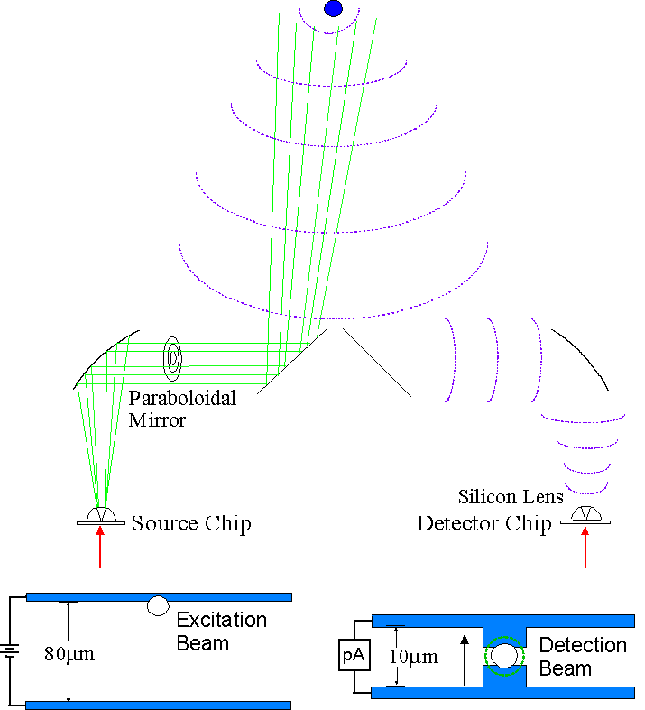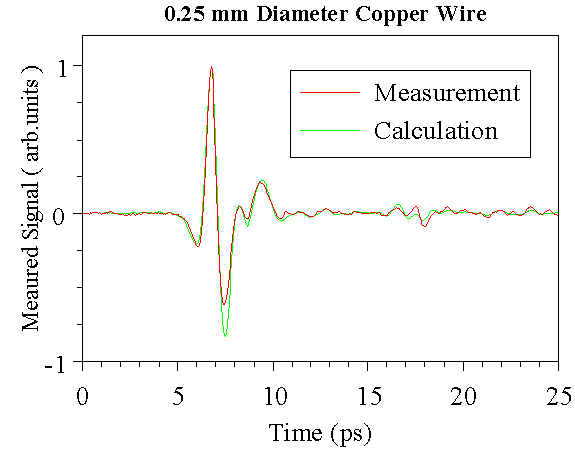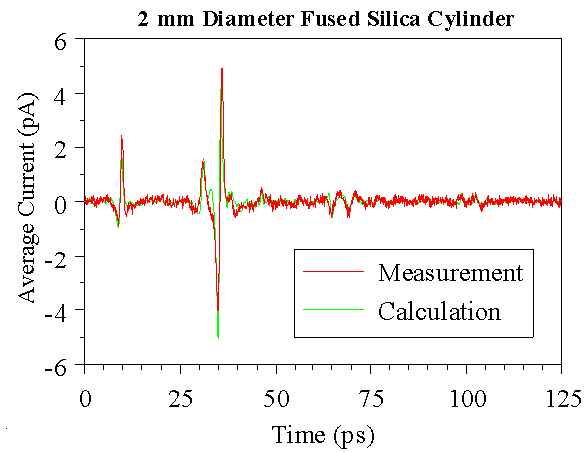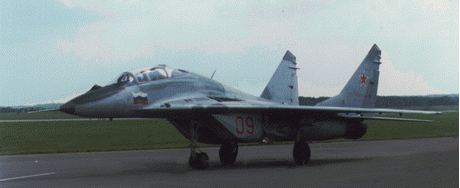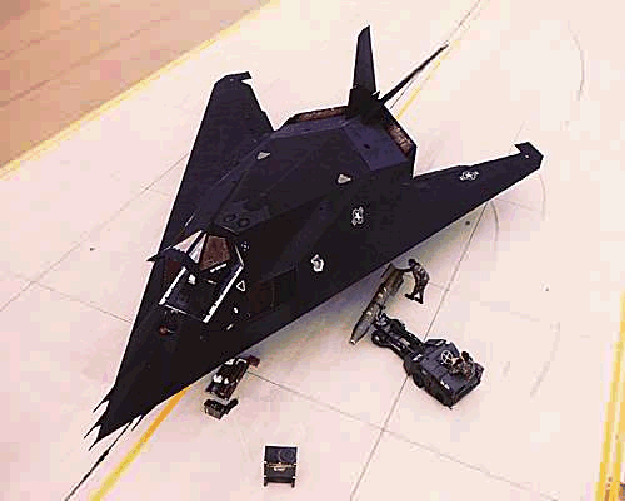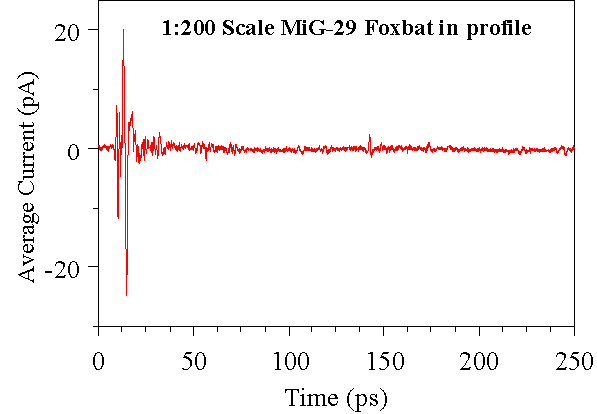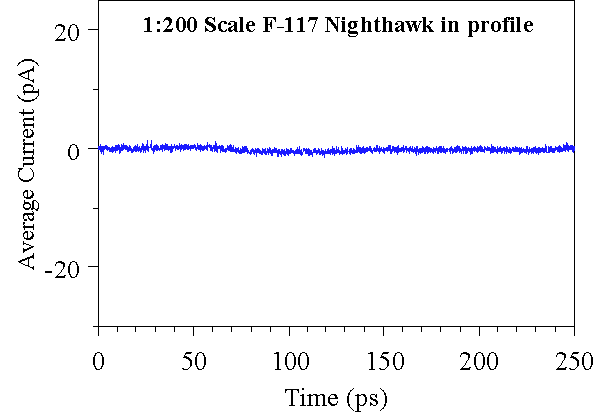Ultrafast THZ Optoelectronic Laboratory
Time Domain Impulse Ranging Using THz Pulses
Freely propagating electromagnetic energy has been used extensively to detect and identify objects at a distance. Since the field scattered from all but the simplest of objects can not be calculated exactly, a wide variety of techniques have been proposed to identify objects by the radiation scattered from them. Although this is usually done using a CW source in the frequency domain it has been recognized since the 1950's that the late time response to an impulse signal provides an intuitive and potentially simpler way to identify targets. Impulse techniques have several experimental advantages over single frequency methods for scale ranging including the elimination of interfering background signals and simultaneous acquisition of many frequencies.
In our lab we use optoelectronic techniques to generate single cycle pulses of freely propagating radiation with frequency components extending beyond one THz, and demonstrate ultrawide bandwidth scattering from simple geometrical objects. The relatively short wavelengths of the THz pulse permit target features of less than one millimeter to be observed, making this technique ideal for scale ranging measurements since realistic target to wavelength ratios can be maintained. Furthermore, the measurement window achieved by the optoelectronic gating technique enables only scattered signal from the target to be detected, providing background free measurements.
The experimental set-up for THz ranging is shown below. For a target distance of 64 cm the beam radius at 1 THz is 1.6 cm at the target. To a good approximation frequencies above 0.5 THz have a uniform distribution over the beam profile at the target. To measure the incident pulse a large flat aluminum mirror was used in place of the target, permitting the response of the receiver to be separated from the scattered field.
Given the incident pulse shape, the exact response of simple geometrical targets may be calculated in the time domain. This allows us to verify that our scale ranging system is measuring the "true" scattering from a target. The figure below shows the measured (red) and calculated (green) pulse shapes in the time domain for scattering from a 0.25 mm diameter wire and a 2 mm diameter fused silica cylinder. All targets are oriented perpendicular to the incident electric field. There is good agreement between the calculated and measured response.
To observe the response of realistic targets with a more complex late time response, we used metal scale model aircraft with target/wavelength ratios of practical interest. Two 1/200th scale model aircraft, a MiG-29 Fulcrum.
and F-117A Stealth,
were located 107 cm from the deflecting mirrors and oriented in side profile. Because of the high frequencies that comprise our THz pulse we can measure the same response of a target down-scaled 200 times that a real radar system would measure on a full size target. The data shown below measured on the 1/200th scale model over the 100 GHz to 2 THz frequency range is exactly the same as measuring the scattered field from 0.5 to 10 GHz of a full size target at 230 m distance. The size of the 1/200th scale model is about 2 inches long which can be compared to the full size plane above. The time domain response for the MiG-29 has extensive signal after the initial specular reflection. The lack of a scattered signal for the Stealth aircraft within our signal to noise ratio indicates the effectiveness of the aircraft's geometry, designed to reflect energy away from the detector.
Check out our list of publications if you are more interested in this work.

